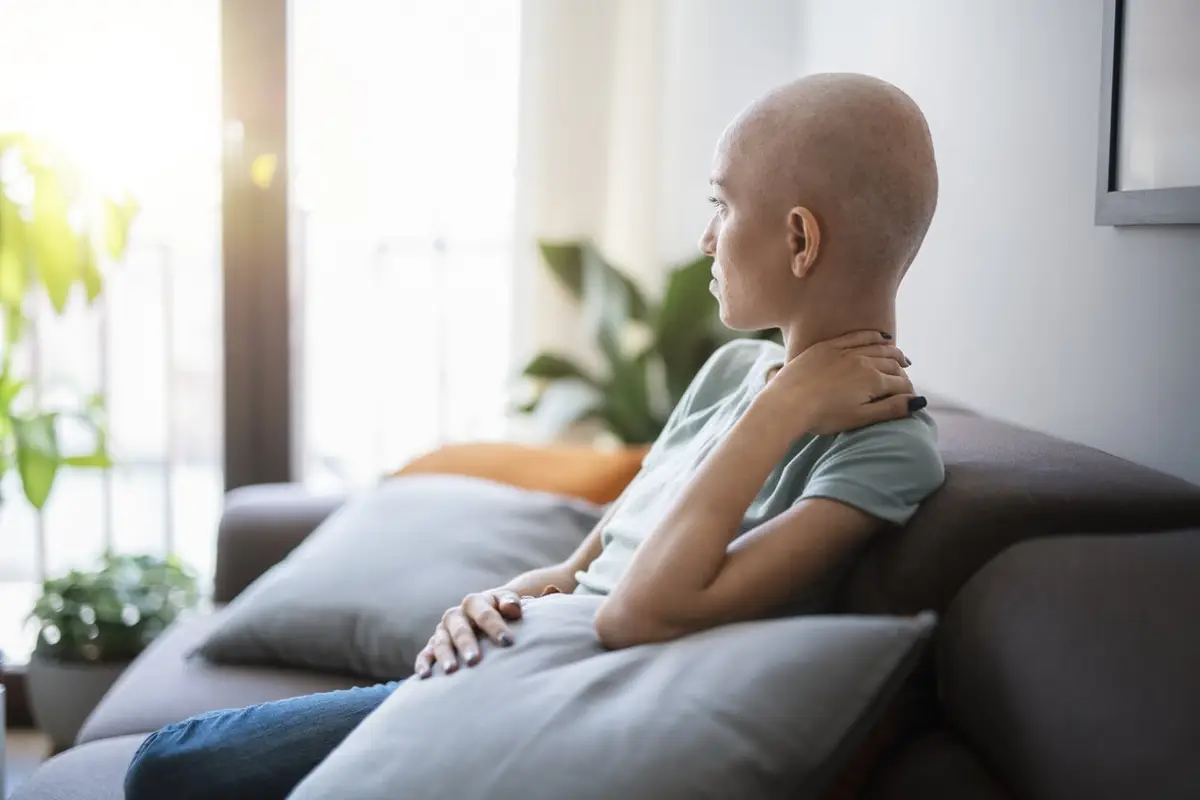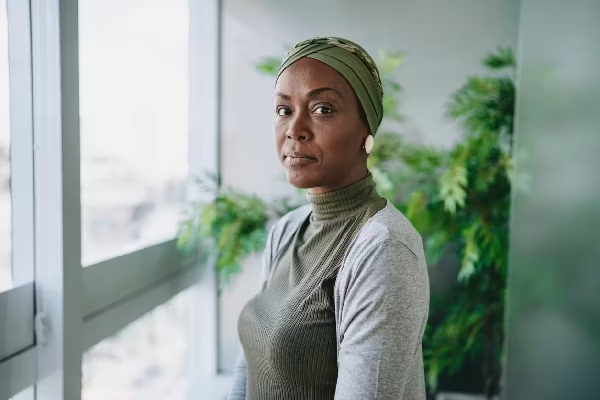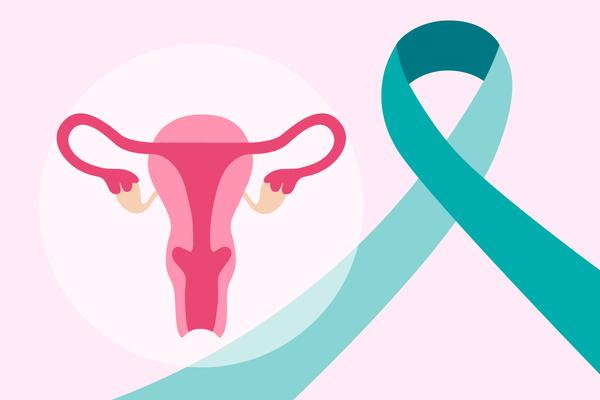A growing number of American women are overdue for their recommended cervical cancer screenings, a statistic healthcare providers (HCPs) worry could be one reason behind the increase in late stage (stages 2 to 4) cervical cancer diagnoses among certain groups. Another theory is lack of HPV vaccination.
Miami mother Avi Grant-Noonan was up to date on all of her recommended exams, including a cervical health screening, but she hadn’t had an HPV vaccine because she was past the FDA-approved age range at the time.*
HPV vaccines are recommended for adolescents ages 11 and 12 and young adults up to age 26 if they haven’t been fully vaccinated earlier. If you are between the ages of 27 and 45, talk to your OB-GYN or your primary care doctor about whether the HPV vaccine is right for you.
Watch: How to Talk to Your HCP About Getting the HPV Vaccine as an Adult >>
Even though Grant-Noonan’s screening was negative, she had a nagging suspicion something was wrong when she attempted to have a second child.
She said she constantly “felt big,” and struggled with bloating. Another Pap test at her gynecologist's office came back normal, but the gynecologist told Grant-Noonan he wanted to redo the test and collect the specimen himself.
That test came back abnormal, and within weeks, she would be diagnosed with stage 3 cervical cancer. She was 35 at the time.
Read: Cervical Cancer Stages and Treatments >>
“I’ve learned you have to keep advocating for yourself,” Grant-Noonan said. “Get your regular Pap smears, tell your provider to make sure they get a good sample and protect yourself through the vaccine.”
Are late stage cervical cancer rates on the rise?
Cervical cancer rates dropped by half from 1975 to 2010, and they remained the same from 2010–2019. Yet, more women are being diagnosed at a later stage.
A 2022 study in the International Journal of Gynecological Cancer reported about an overall 1% annual increase in advanced stage diagnoses (defined as stage 4) for all women between 2001–2018. One of the most dramatic shifts took place among white women ages 40–44 living in the South, who had a 4.5% annual increase in advanced stage diagnoses.
This may be explained at least partially because, according to the International Journal of Gynecological Cancer study, white women had a higher rate of missed or lack of screening (guidelines recommend getting a primary HPV test every five years, a co-test of Pap and HPV testing every five years or a Pap test every three years) and lower rates of HPV vaccination than all other women.
Black women had the highest number of advanced-stage cervical cancer diagnoses, but white women had the largest increase in later-stage cervical cancer diagnosis.
Researchers are trying to figure out why stage 4 cervical cancer diagnoses, which have a five-year survival rate of just 17%, are increasing. The rise in advanced cases is even more frustrating for HCPs considering that there are three effective ways to prevent cervical cancer: human papillomavirus (HPV) vaccine, HPV testing (which detects the virus that causes cervical cancer before cancer develops) and Pap testing (which can detect abnormal cells before they develop into cervical cancer).
Monica Avila, M.D., a gynecologic oncologist at Moffitt Cancer Center in Tampa, Florida, said HCPs are seeing conflicting statistics in patients depending on age. She noted that some studies have shown a 3% decrease in cervical cancer rates in women ages 20–24 from 2012 to 2019 — but a sharp rise in late-stage diagnoses in women over 65.
“The problem now is that the pendulum has swung the other way, and we’re seeing increases in late-stage cervical cancer in older women and also in women of older reproductive ages,” Avila said. “Specifically in women ages 30 through 34, they’re seeing about a 2.5% increase as well.”
Delay can be deadly
Researchers believe the recommendation of the HPV vaccine, which became available in 2006, for both boys and girls has contributed to the drop in cervical cancer diagnoses among the youngest women studied. But that decrease could reverse as well, since many people missed regular screenings and vaccinations during the Covid pandemic. Avila also wondered if there’s been a dip in educational efforts about HPV, the vaccine and the importance of cervical cancer screening — among other healthcare concerns — as the world focused on Covid during the past three years.
Avila said she is also concerned about another statistic from the 2022 study.
“We’re seeing an increase in the rise of something called adenocarcinoma, which is a more aggressive type of cervical cancer,” Avila said. “The more common ones are known as squamous cell carcinomas. Adenocarcinomas are a little bit rare, but the incidence is increasing. Southern white women were having the increases in adenocarcinoma particularly, and we have yet to tease out why that is happening.”
Socioeconomic status — including income, location and issues with health insurance — can also play a role in the increase of later-stage diagnoses because of a lack of access to quality care. Avila said many of her later-stage cervical cancer patients came to Moffitt Cancer Center for screening because they weren’t able to get timely appointments with their regular gynecologist for testing.
Cervical cancer is slow developing, so a later-stage diagnosis often means an individual hasn’t been screened in 5–10 years. For older women, the American Cancer Society recommends that screening can stop at 65 if a patient has had several negative tests in a row during the previous 10 years, including one in the past five years. Research has found that as women get older, they receive fewer screenings.
“When we’re missing those screenings, we’re not detecting the abnormalities. And then all of a sudden, women show up at age 65 and we’re thinking they’re all done and instead, we discover they have cervical cancer,” Avila said.
The importance of advocating for yourself
Grant-Noonan, now 37, has been in remission for two years. She’s been able to move from having Pap tests every three months to every six months to make sure the cancer hasn’t returned.
She’s glad she continued to push for answers and tells her story to other women so they can avoid experiencing what she did.
“Anything I can do to help prevent someone from developing cervical cancer, I’ll do it,” she said. “If I can save one life, I’ve fulfilled my purpose.”
*Editor’s Note: The FDA has since increased the approved age range for the HPV vaccine to 45.
This resource was created with support from Merck.
- Clinically Speaking: Questions to Ask Your Healthcare Provider About Cervical Cancer Prevention ›
- My Life-Changing Cervical Cancer Diagnosis Inspired Me to Become an Advocate for Women’s Health ›
- Fast Facts: Here’s What You Need to Know About Cervical Cancer and HPV ›
- Cervical Cancer Stages and Treatments ›
- How a Cervical Cancer Diagnosis in My 20s Taught Me How to Live ›
- Facts About Diabetes Quiz - HealthyWomen ›
- Cervical Cancer Taught Me to Talk About My Vagina - HealthyWomen ›
- Why do I need a Pap test and an HPV test? - HealthyWomen ›
- Ending the Stigma Around Cancers Caused by HPV - HealthyWomen ›
- Comprehensive Guide to Cervical Cancer Treatment Options - HealthyWomen ›
- Guía integral de opciones terapéuticas para el cáncer cervical - HealthyWomen ›
- 8 Things to Consider If You Have Cervical Cancer - HealthyWomen ›
- 8 cosas que debes considerar si tienes cáncer cervical - HealthyWomen ›




